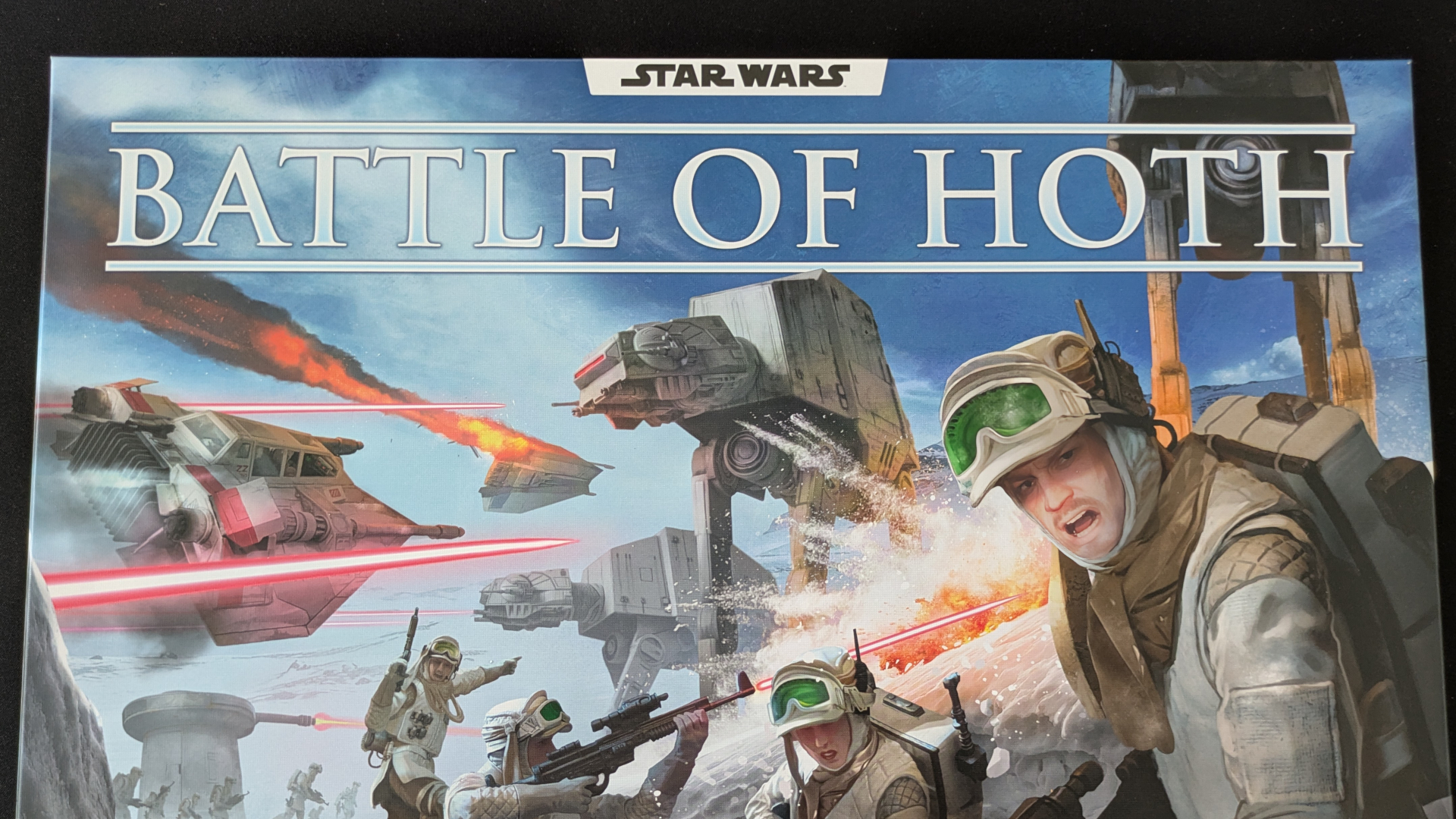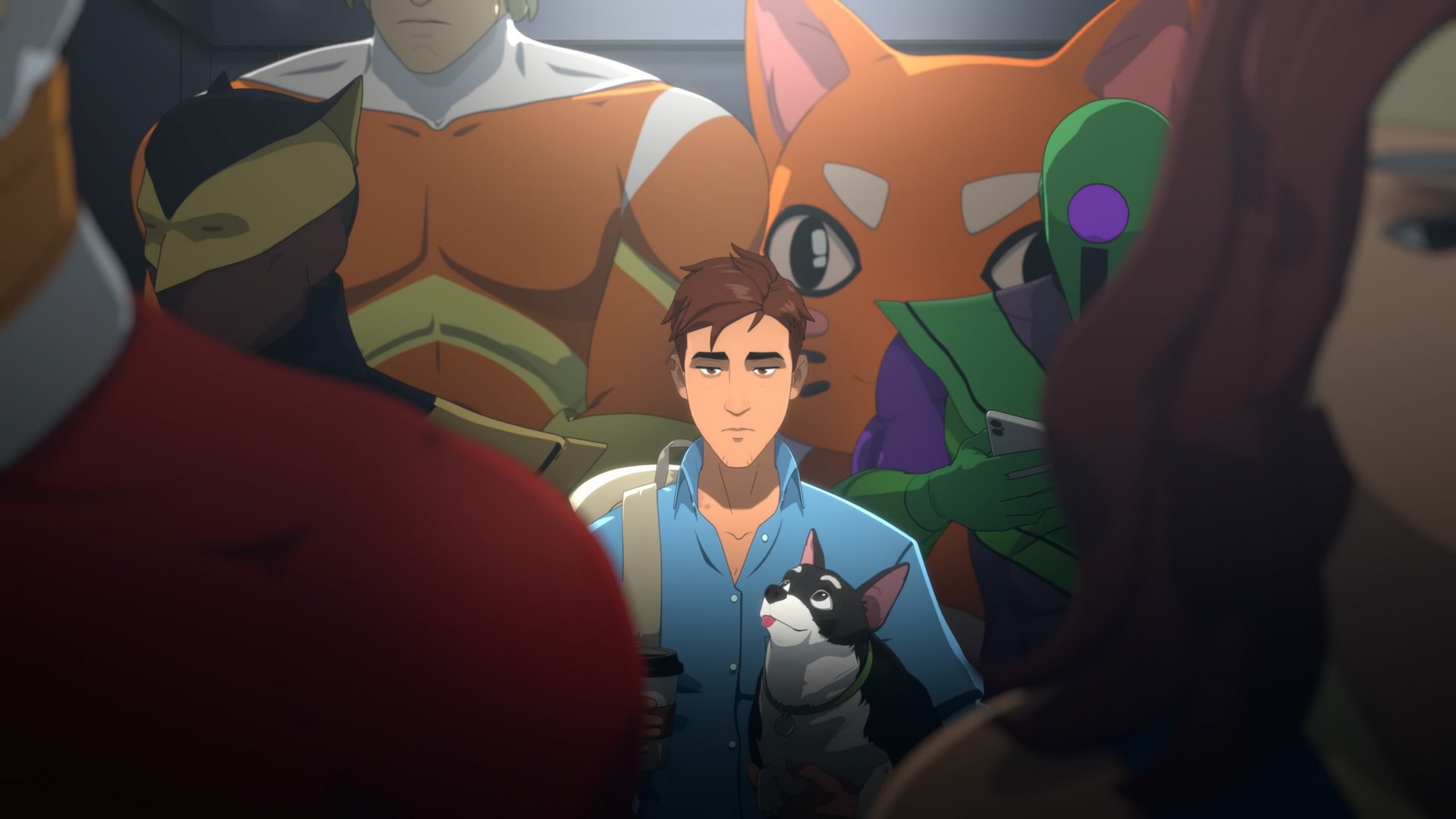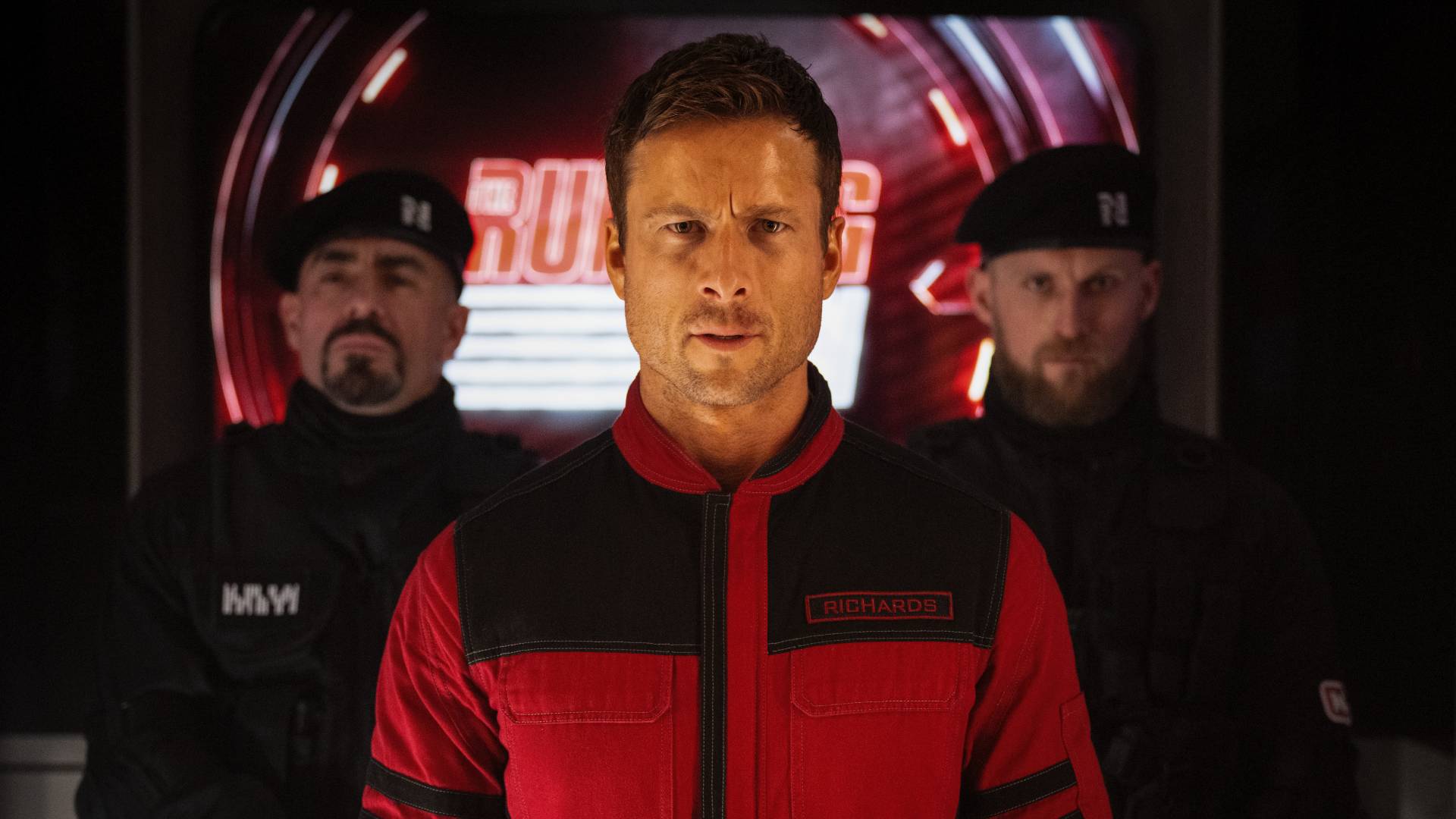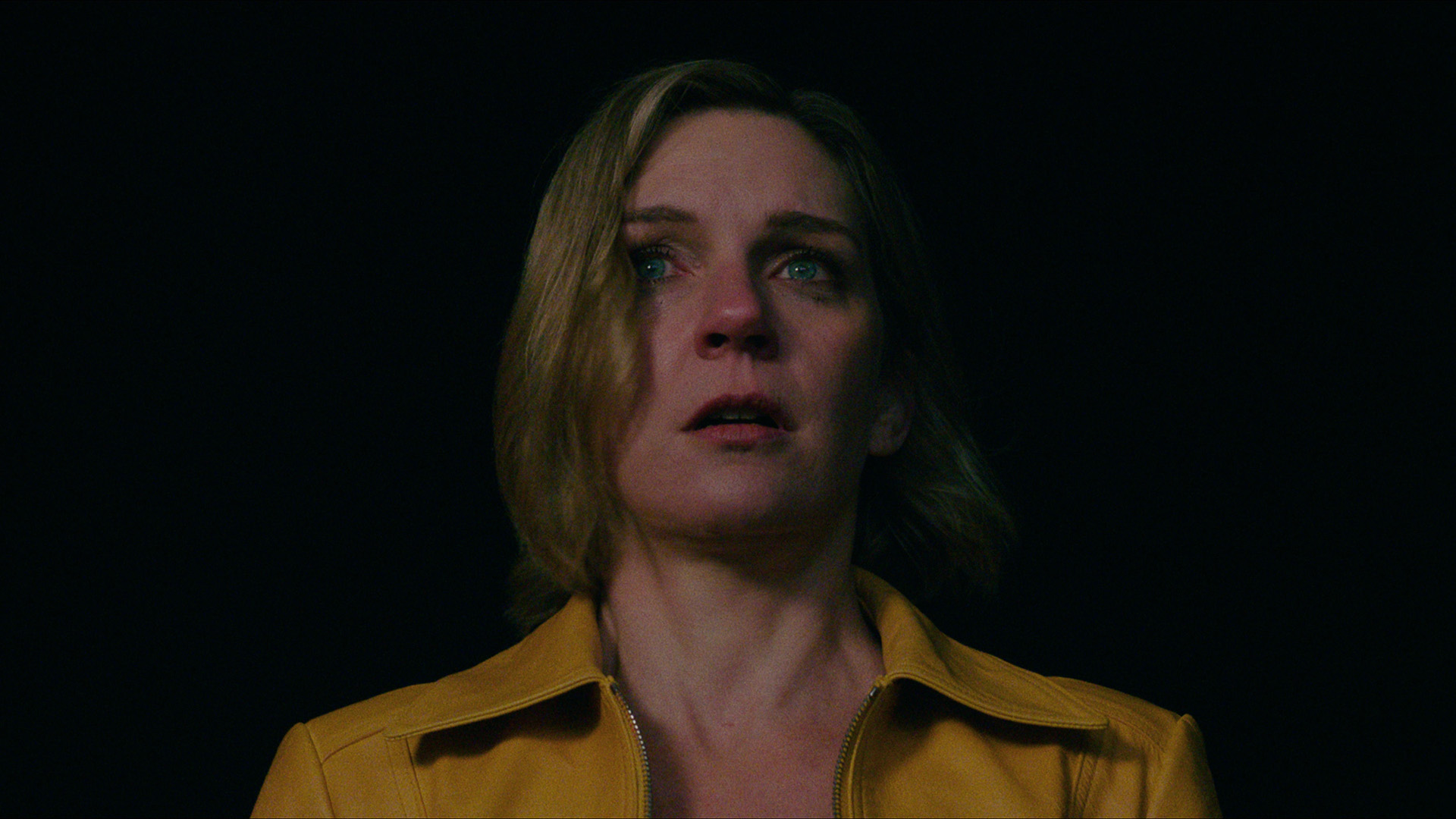GamesRadar+ Verdict
Star Wars: Battle of Hoth is swingy and leans too hard on previous games using the same rule set, but it’s still thematic and exciting in its own right. It's also an accessible introduction to both tabletop wargames and tabletop Star Wars.
Pros
- +
Easy to learn wargame for all ages
- +
Quick-playing
- +
Detailed miniatures & scenic terrain tiles
- +
18 scenarios & included campaigns give plenty of content to work through
Cons
- -
Games can be very swingy, and often come down to cards or dice
- -
Setup time for some of the scenarios is a pain
Why you can trust GamesRadar+
Star Wars as a franchise has spawned a bewildering number of hugely popular and acclaimed spin-offs over the years (including a few of the best board games, depending on who you ask), so it’s fitting that the latest game to bear the branding, Star Wars: Battle of Hoth, is part of a sprawling franchise of its own.
Based on the battle scenes from the titular planet in The Empire Strikes Back, Star Wars: Battle of Hoth is part of a family of games that uses the same core rule set, known as Commands & Colors. Most of these are historical wargames, although there have been a couple of fantasy versions. This is the first sci-fi adaptation, although possibly not the last; there's a notable "galactic battles" logo on the box, suggesting there may be more to come.
Star Wars: Battle of Hoth features & design
Price | $59.99 / £49.99 |
Ages | 8+ |
Game type | Wargame |
Players | 2 |
Lasts | 30mins |
Complexity | Low |
Designers | Richard Borg, Adrien Martinot |
Publisher | Days of Wonder |
Play if you enjoy | Commands & Colors, Undaunted |
- Lots of shiny Star Wars toys in the box
- Thoughtful box inserts & trays that make it easy to pack away
- Artwork is thematic, but lacks character
As the name suggests, we head to the frigid world of Hoth from the original trilogy in this wargame for two players. You'll be fighting over the planet as either the Rebellion or evil Empire, controlling an entire army each of infantry and vehicles.
Opening up a Star Wars game always comes with the nostalgic promise of shiny new toys, and Battle of Hoth doesn’t disappoint. At the bottom of the box are two trays with snap-on lids bearing the icons of the game’s two factions, Rebel and Imperial. Within are a collection of figures for each side. The Rebels have Echo Base Troopers, swathed against the cold of the frozen planet Hoth, plus sleek snowspeeders and doughty artillery turrets. The Imperials also have infantry but in a different sculpt, the sinister Snowtroopers, supported by some mechanical probe droids and, what everyone’s waiting for, three massive AT-AT walkers. They’re all good sculpts, detailed and made of solid plastic so they’re paintable if you want to pimp your set.
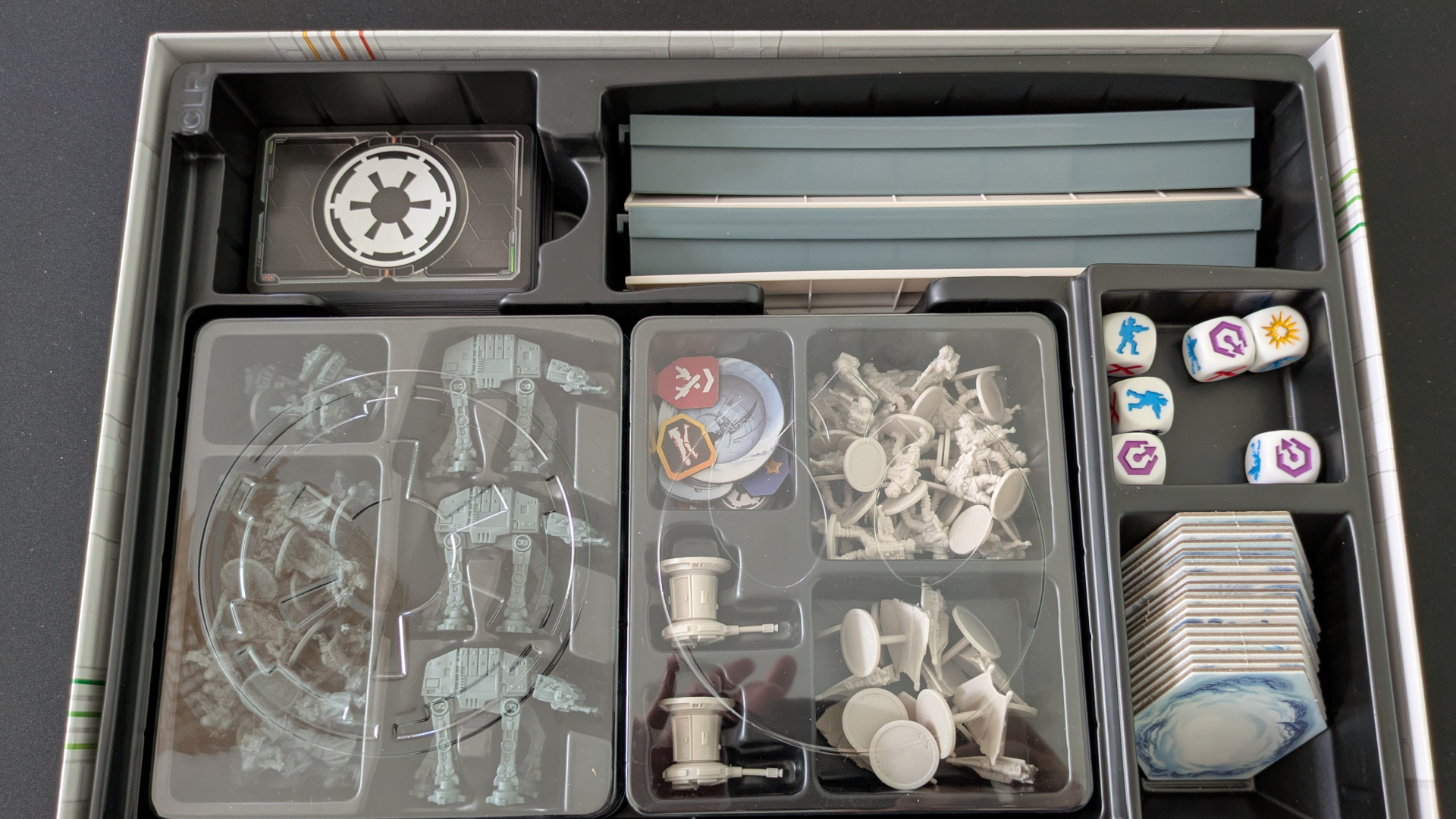
The remainder of the box contents are less spectacular but perfectly serviceable. There’s a board, printed with the blinding white and blue of the snowfields it represents. It’s double sided, although most players will only make use of one side. The obverse is for people who can put two sets together, making a double-sized board for epic battles. The sheet of punch-out terrain hexes are also double-sided to provide a variety of scenery, from icy ridges to frozen trenches.
Two decks of cards are included, decorated with thematic art, alongside a handy stand for each player to keep their cards on. Commands & Colors games all use custom dice, with unit symbols to denote possible hits, so there’s a handful of those for battles. Rounding out the contents is a surprising quantity of paper: a rulebook, a scenario book, four campaign booklets which give you two campaigns with different outcomes for the two players, and a variety of player aids.
Gameplay
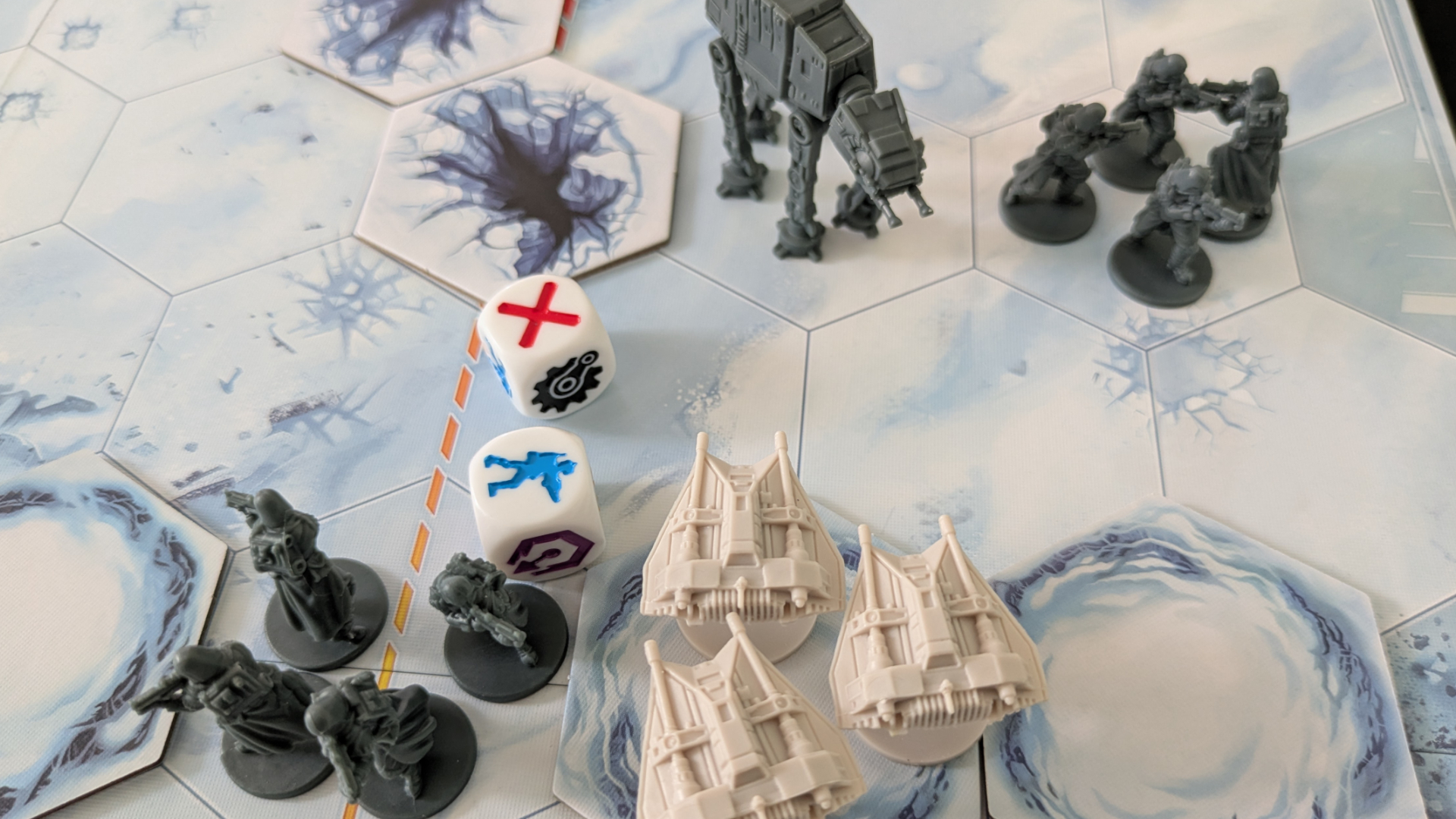
- You play cards from your hand to activate units in matching board areas
- Each side has asymmetric units which battle using custom dice based on range
- Campaigns, which win you a small advantage with victory, are the best way to play
The core conceit of all the Commands & Colors games is that battles are played out on a board of hexagonal spaces, which is divided into left, right and central sections. You pick a scenario, which shows you how to set up the board, adding terrain hexes and groups of unit models to particular hexes. Each player has a hand of cards, each of which lets you order a certain amount of units in a particular section: say, 2 units on the left. Each turn you play a card, pick which of the eligible units you want to activate, and then you can move and battle with them. Fights are resolved with custom dice that make it more likely you’ll hit infantry than other unit types, and can sometimes cause a target to retreat.
Weekly digests, tales from the communities you love, and more
It’s spawned so many different versions because it’s a great system. The card draw is exciting – a card ordering all units in the center is generally better than one on a flank – but it also allows for a degree of tactics. If you’ve got two cards that order units in the same section, then you can think about chaining two turns together for maximum impact. If not, you have the option of moving a unit across a section border to activate it with a different card next turn. These options have risks and trade-offs that you’ll need to consider. It’s chaotic, but it’s controlled chaos, giving players plenty of thrills while retaining the sense that their decisions matter.
One way in which Battle of Hoth deviates from its peers is by having a degree of asymmetry. Each player – Rebel and Imperial – draws from their own deck, for starters. These are a mere sixteen cards each for the basic game, although each side also has leader cards they can add in for variety, representing characters from the movies with thematically appropriate effects. Darth Vader, for instance, can increase the attack strength of a unit with force powers or, in a particularly delightful example of Imperial discipline, order all the units on the board at once but decrease their effectiveness.
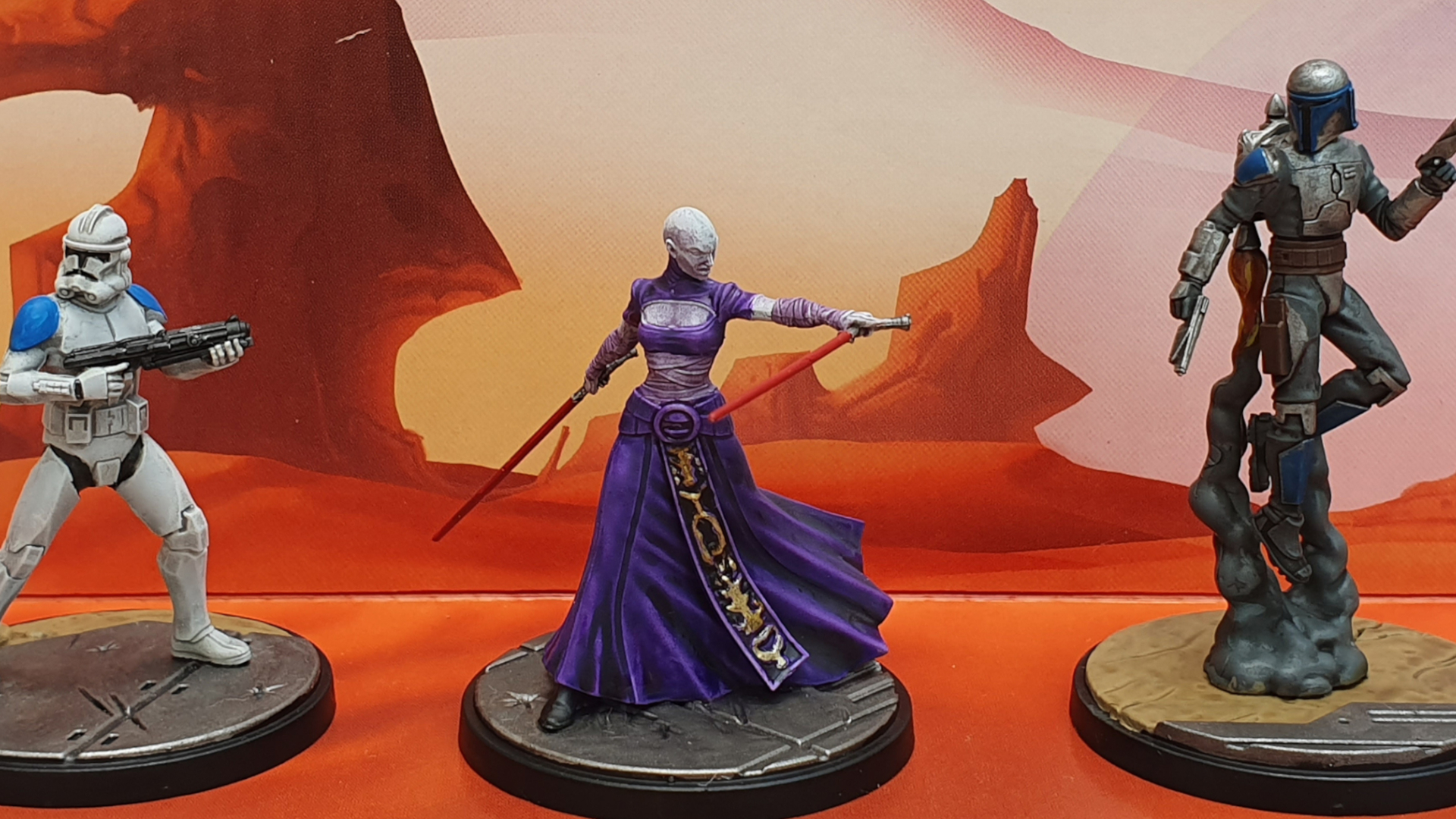
If you'd prefer to get up close and personal with your battles, you can either grab the new edition of Star Wars Legion (think 'Star Wars Warhammer') or the skirmish game, Shatterpoint. We were big fans of the latter in our Star Wars: Shatterpoint review.
Both sides also have different units at their disposal. Infantry for the two players are basically the same, with their firepower decreasing at range, but the Rebels have one less model in each group. The Rebel player also has snowspeeders which move fast and pack a big punch, but only at short range, and artillery turrets which have a long range but cannot move. The Imperials, meanwhile, supplement their forces with probe droids, which are weak but whose destruction never counts toward victory conditions, and the dreaded AT-AT, a single model unit that packs a powerful attack and is nigh-on invulnerable, needing hits to be re-rolled successfully in order to count.
This asymmetry achieves two things. Firstly, you get a degree of thematic flavour and tactical depth. An AT-AT is a scary thing to take on, for example, and is sometimes best left alone. But if you’re going to risk it, getting up close and personal with a snowspeeder unit and their big pool of close-range dice is probably the best way to do it, just as it is in the movie. And, just like the film, woe betide if you miss and get the full fury of the walker’s fire in return. Second, it makes the game stand out among other titles in what is now a very well worn series.
Fortunately, the designers seem to have learned from those past games. The scenario design here is better than in Memoir ‘44, a World War 2 iteration of Commands & Colors that is the most popular entry so far, which had some notoriously imbalanced setups, and the inclusion of realistically playable campaigns is a really fun extension. But the core game has the same good and bad aspects as Memoir, namely that although it’s tremendously exciting, it’s also very swingy. Most scenarios are won via a victory point count, and you generally earn points by wiping out units. That means games tend to stay close until one or two lucky dice rolls pushes one side or the other over the line.
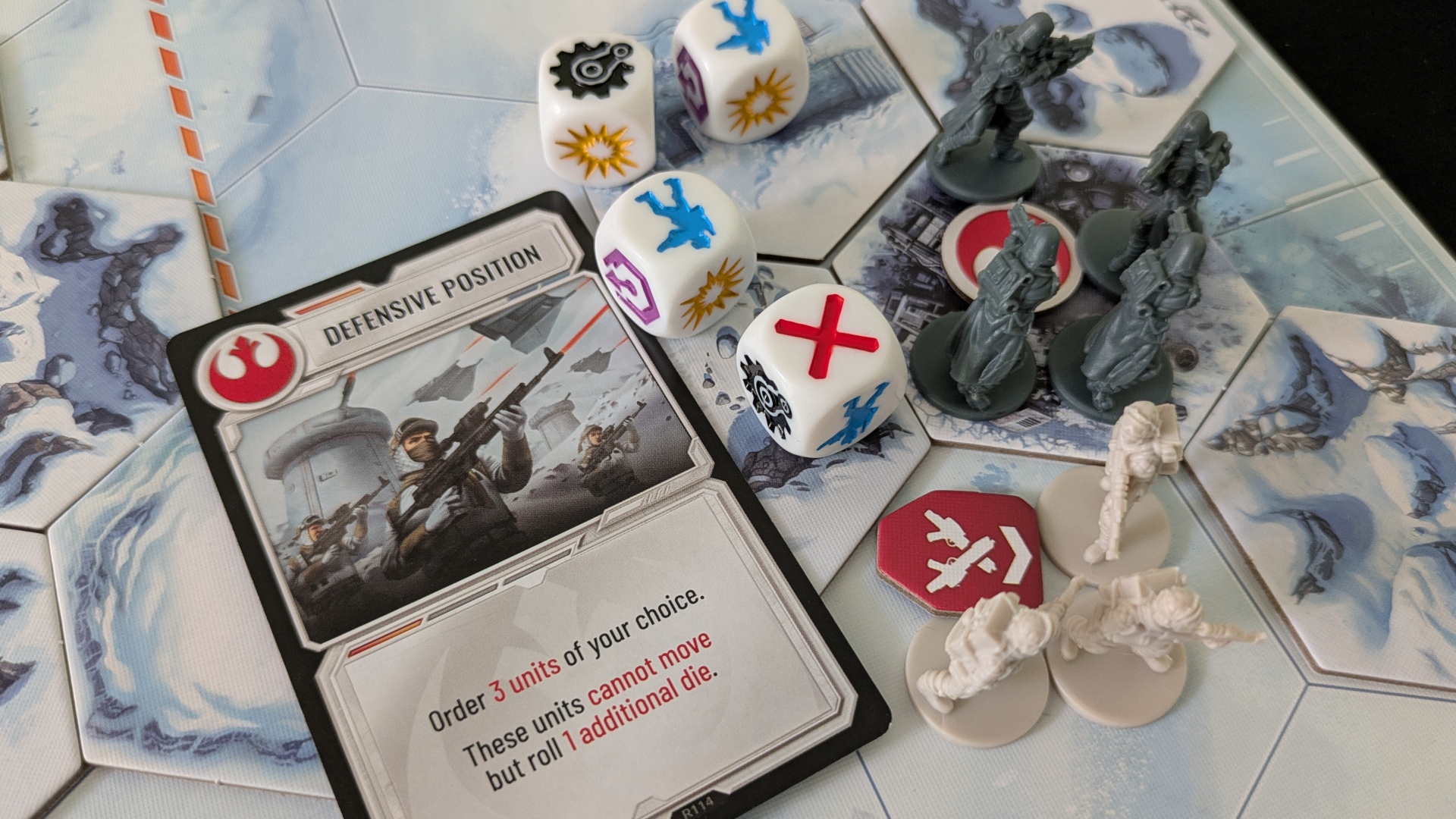
In theory there’s all sorts of stuff you can leverage to make a difference. There are simple terrain rules, like impassable crevasses and protective trenches, and later scenarios give certain units, marked by badges, special abilities, such as the E-Web heavy blaster that allows an equipped infantry to re-roll attack dice if it hasn’t moved. But fundamentally this is a game governed by dice and card draw where you can sometimes eke out an edge through good planning or experience. That can make many of the scenarios feel a little samey, even though the tactical challenge of each is different.
However, it’s worth considering what the target market for this game is. It’s the simplest entry in the whole Commands & Colors series and, bar the sometimes frustrating setup time, the fastest-playing. It also looks fantastic on the tabletop with all those detailed miniatures going to-to toe over the icy surface of Hoth. That gives it a powerful toy factor, and it’ll be really appealing for younger fans of the Star Wars franchise or, indeed, for older fans who want a quick and thematic way to dip their toes onto the tabletop. While there are many great Star Wars board games around, they generally tend toward the longer and more complex, whereas this is very accessible.
Should you buy Star Wars: Battle of Hoth?
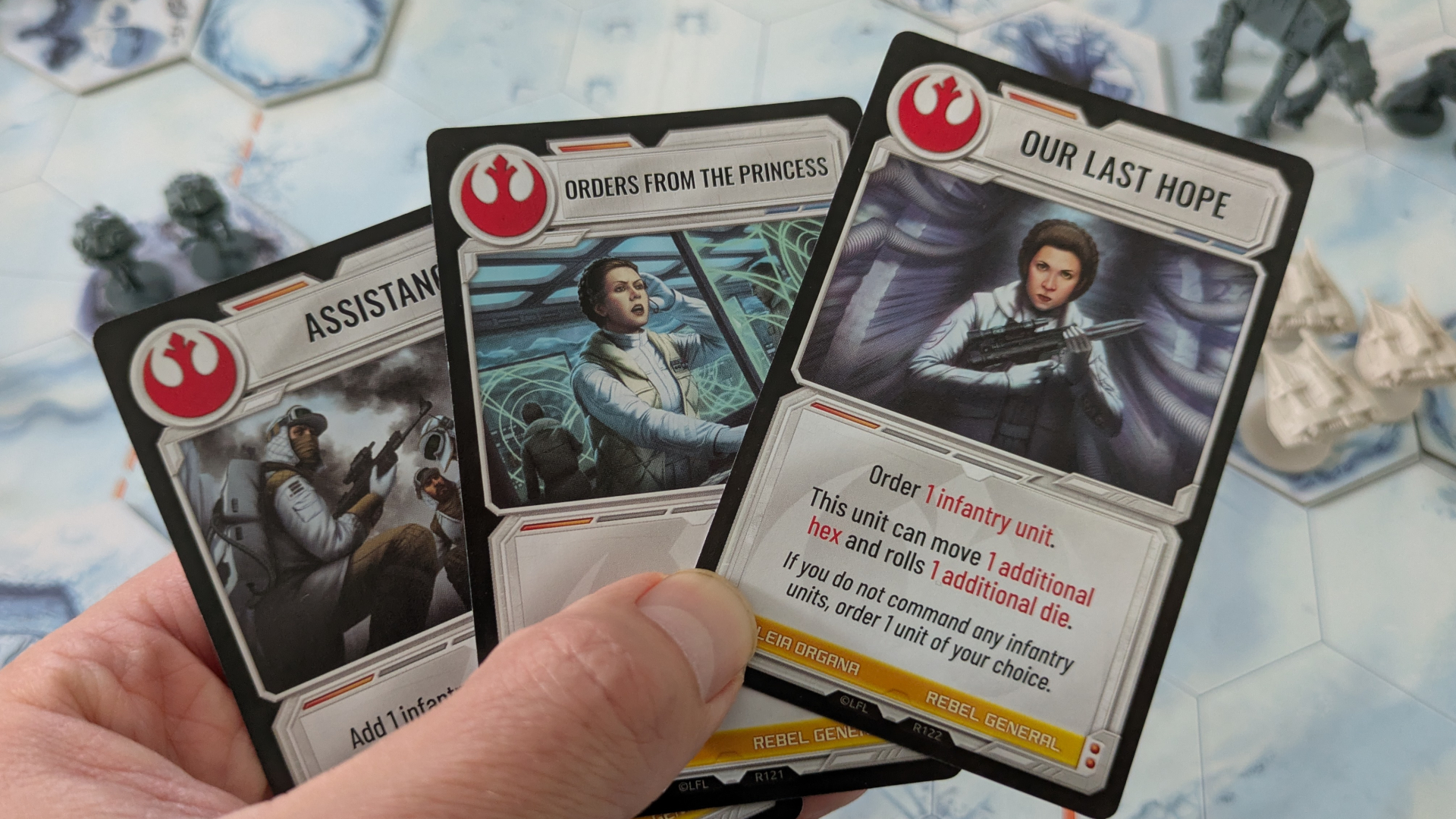
Whether you should invest in Battle of Hoth depends strongly on your experience with Commands & Colors games and how you feel about Star Wars. If you’re new to the game system as a whole this is an easy recommendation, an accessible and thematic introduction that will let you experience what’s made it so popular and perhaps give you a taste for the bigger, more complex versions like the outstanding Commands & Colors: Ancients. If not, and particularly if you’ve already played the similar Memoir ‘44, it’s much less appealing.
However, the ongoing draw of losing yourself in a galaxy far, far away may trump any concerns you have about novelty or replayability, and its simplicity and good looks may make it irresistible for younger players.
Ratings
Criteria | Notes | Score |
|---|---|---|
Game mechanics | Commands & Colors is a really well-worn system. It’s great fun, especially for newcomers, and Battle of Hoth does introduce some fresh aspects, but more novelty wouldn’t go amiss. | 3/5 |
Accessibility | As the simplest entry in the Commands & Colors series so far, this is a breeze to teach, although later scenarios do add more rules that you’ll need to digest. | 4/5 |
Replayability | Although there are a lot of scenarios in the box, the swingy nature of the game can make them seem a little samey. However, there’s a lot of fun in playing through the campaigns. | 3/5 |
Setup and pack-down | Because there's a wealth of miniatures, tokens, cards, and terrain tiles to wrestle with, this isn't the quickest game to set up or put away. | 3/5 |
Component quality | The included miniatures are fantastic, although the artwork is a bit less engaging, but the whole assemblage is really eye-catching. | 4/5 |
Buy it if...
✅ You're new to the Commands & Colors games
If you’re new to the system then this is an easy introduction, and everything in this box will feel fresh and exciting to you. You’ll quickly learn why it’s such a huge hit with its exciting, tactical gameplay.
✅ You want a Star Wars game that’s well-suited for younger players
Many of the best Star Wars tabletop games tend toward the longer and more complex, or veer into collectibility. This is a standalone box with a big toy factor, easy rules, and exciting gameplay, making it fantastic for kids.
Don't buy it if...
❌ You’re a Commands & Colors veteran
If you’re familiar with the series then there’s not enough new here to catch your eye. It’s very like Memoir ‘44 in particular, although the campaigns still give it a bit of appeal to seasoned players.
❌ You want a considered strategy game
Decisions definitely make a difference here, but there’s not a lot of depth to master, and once you’re on top of how everything works a lot of games will be won or lost on random factors.
How we tested Star Wars: Battle of Hoth
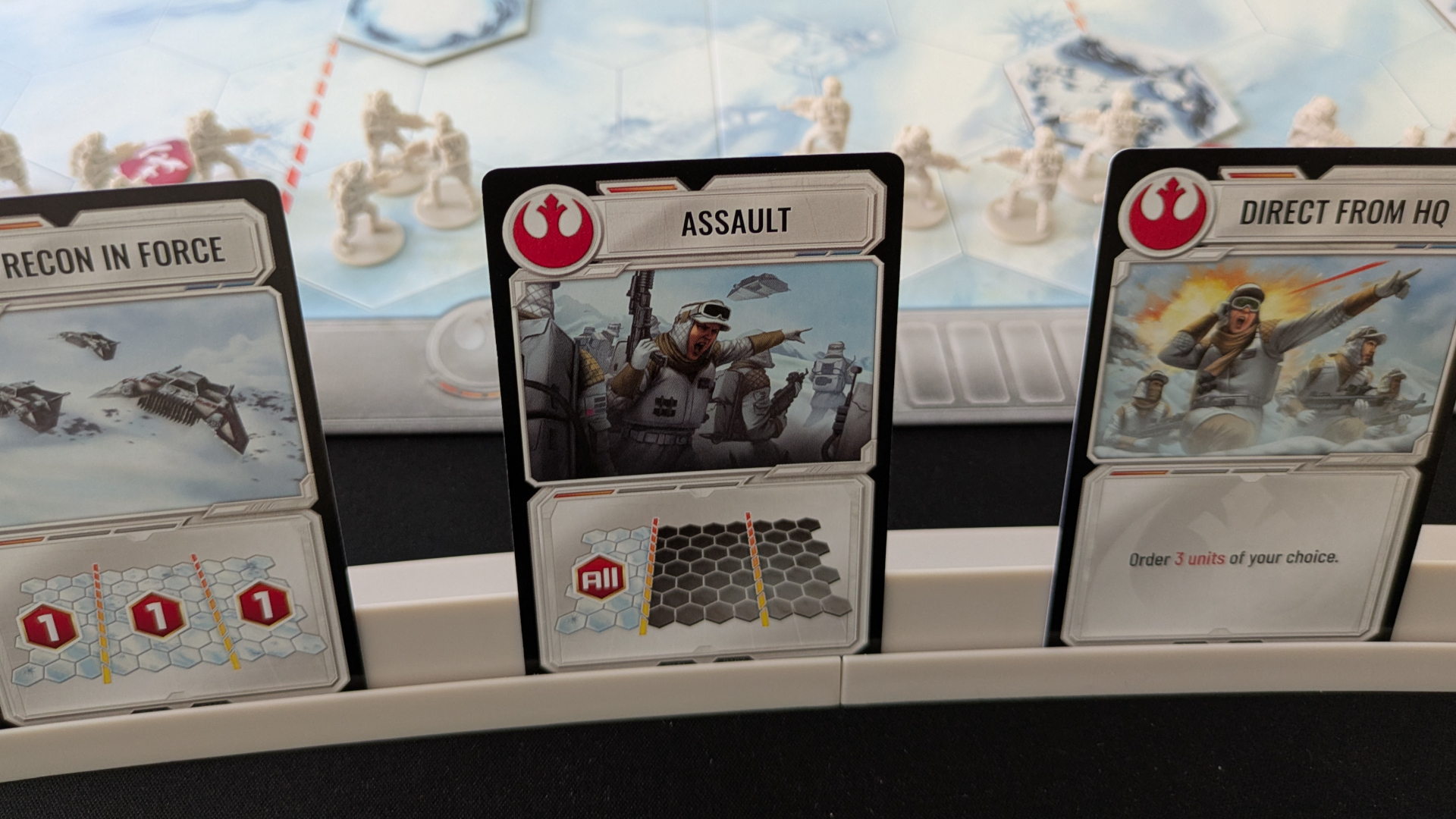
This review was conducted using a sample provided by the publisher.
Our reviewer has reviewed board games professionally for many years now, so used that expertise to help them analyze the rules before diving into test matches. They also compared this product to previous entries in the series to see how it compares to them.
To learn more about our procedure, be sure to check this guide to how we test board games or the full GamesRadar+ reviews policy.
If you'd like other recommendations, why not try the best family board games or the best adult board games?

Matt is a freelance writer specialising in board games and tabletop. With over a decade of reviews under his belt, he has racked up credits including IGN, Dicebreaker, T3, and The Guardian.
You must confirm your public display name before commenting
Please logout and then login again, you will then be prompted to enter your display name.
